Notable species :-
Anacamptis morio
Cephalanthera damasonium
Dactylorhiza fuchsii
Dactylorhiza incarnata
Dactylorhiza maculata
Dactylorhiza praetermissa
Dactylorhiza viridis
Epipactis leptochila
Epipactis helleborine
Epipactis palustris
Epipactis purpurata
Goodyera repens
Gymnadenia conopsea
Gymnadenia viridis
Himantoglossum hircinum
Neottia ovata
Neottia nidus-avis
Ophrys apifera
Orchis anthropophora
Platanthera chlorantha
Cephalanthera damasonium
Dactylorhiza fuchsii
Dactylorhiza incarnata
Dactylorhiza maculata
Dactylorhiza praetermissa
Dactylorhiza viridis
Epipactis leptochila
Epipactis helleborine
Epipactis palustris
Epipactis purpurata
Goodyera repens
Gymnadenia conopsea
Gymnadenia viridis
Himantoglossum hircinum
Neottia ovata
Neottia nidus-avis
Ophrys apifera
Orchis anthropophora
Platanthera chlorantha
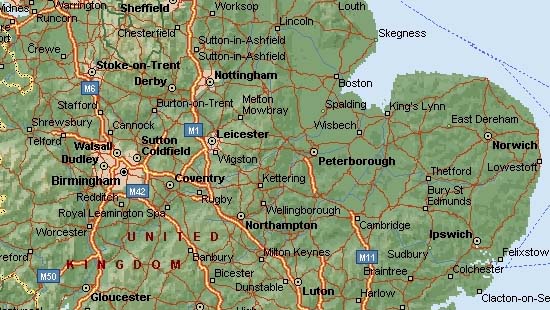
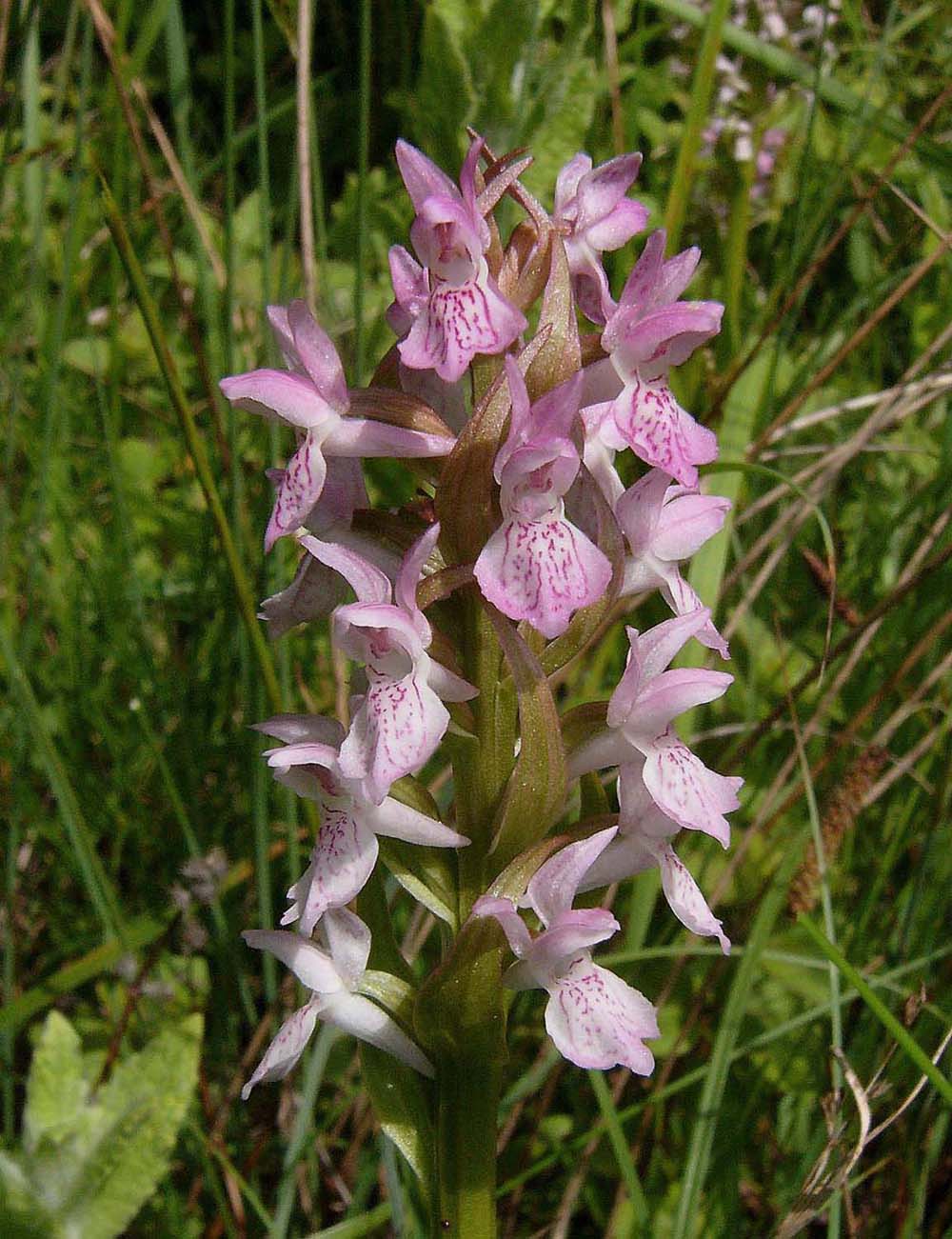
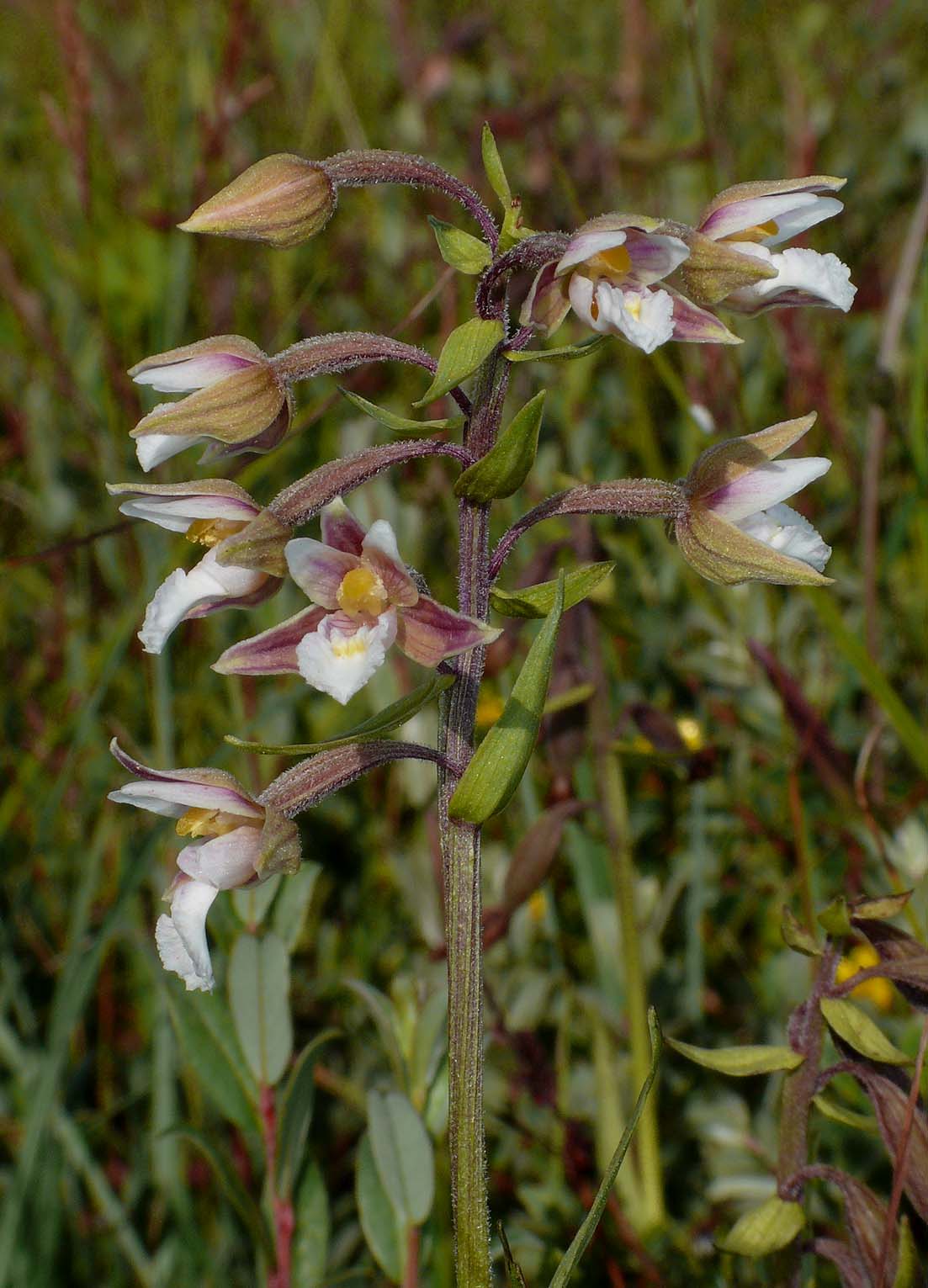
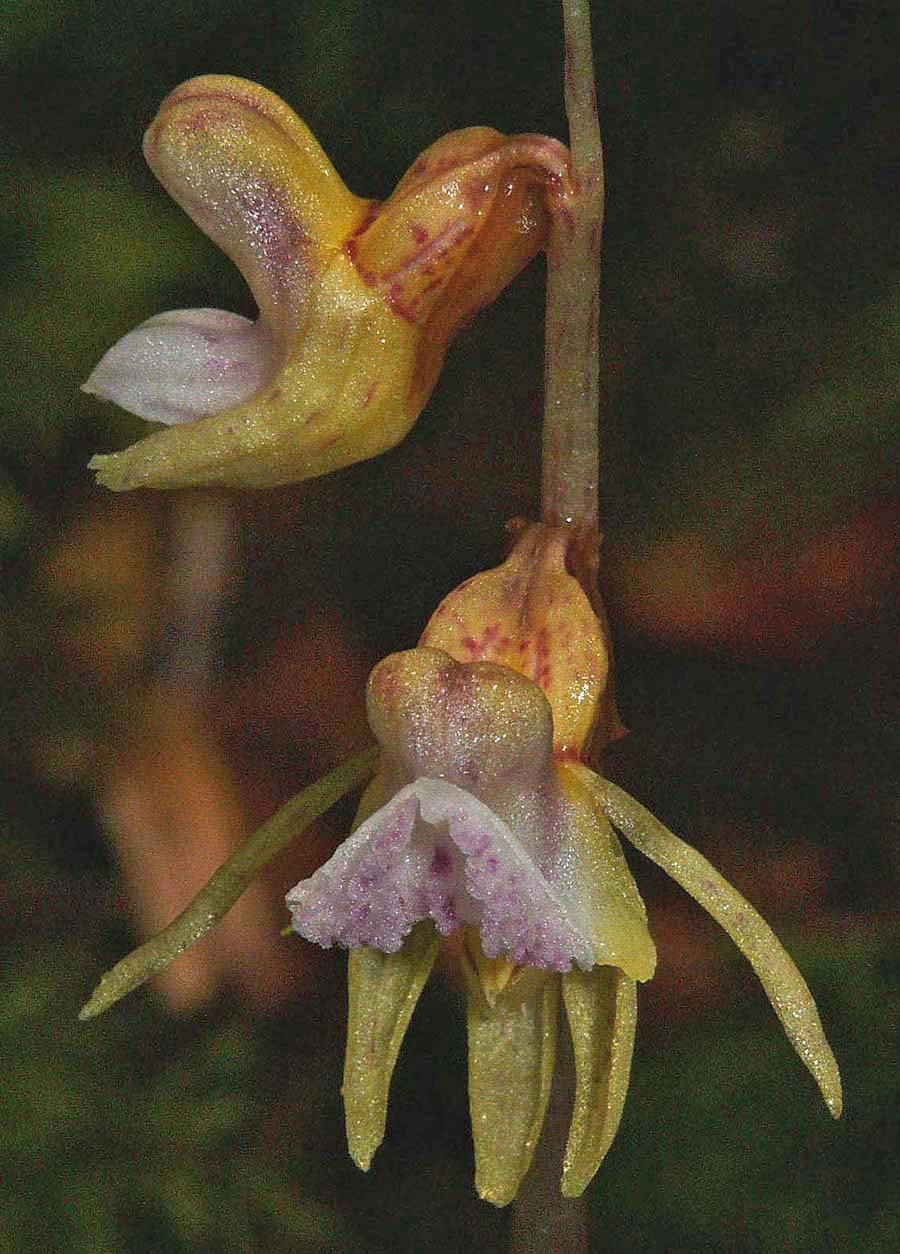
Areas of interest
Central England is regarded as being the area south of a line from Liverpool to Lincoln and north of a line between Gloucester and Clacton-on-sea. It is a region of mixed landscapes and perhaps best described on a regional basis. The Pennine Hills extend south from northern England entering central England as the Peak District and continuing on to become the Derbyshire Dales. To the east are the extensive flatlands of East Anglia and to the west the hills of the Welsh Marches, Malverns and Shropshire. South of the Pennines the landscape softens and you encounter the gentle hills of the Cotswolds and the Chilterns.
The Northern part of the Peak District is largely situated in South Yorkshire and is locally referred to as the Dark Peak. Although the underlying rock formation is limestone, it is thickly covered with a layer of millstone grit which is both acidic and easily saturated. As a result the landscape largely comprises wet moor and these somewhat bleak conditions are unattractive to most orchid species. In contrast the southern section in Derbyshire, often referred to as the Dales or White Peak, do not possess the millstone grit layer and the countryside is one of rich upland meadows with frequent limestone rock outcrops and deep caves. The flora generally is both prolific and varied, the orchids being no exception. Species to be found here include Anacamptis morio, Dactylorhiza viridis, Gymnadenia conopsea, Neottia nidus-avis, Orchis mascula, Platanthera chlorantha and sparingly in the area around Wirksworth, Neotinea ustulata .There are numerous Nature Reserves in the Dales but of particular interest is a wildlife walk called the Monsal Trail which follows the route of the former Mdland Railway main line through highly scenic countryside with a wealth of wild flowers, including orchids.
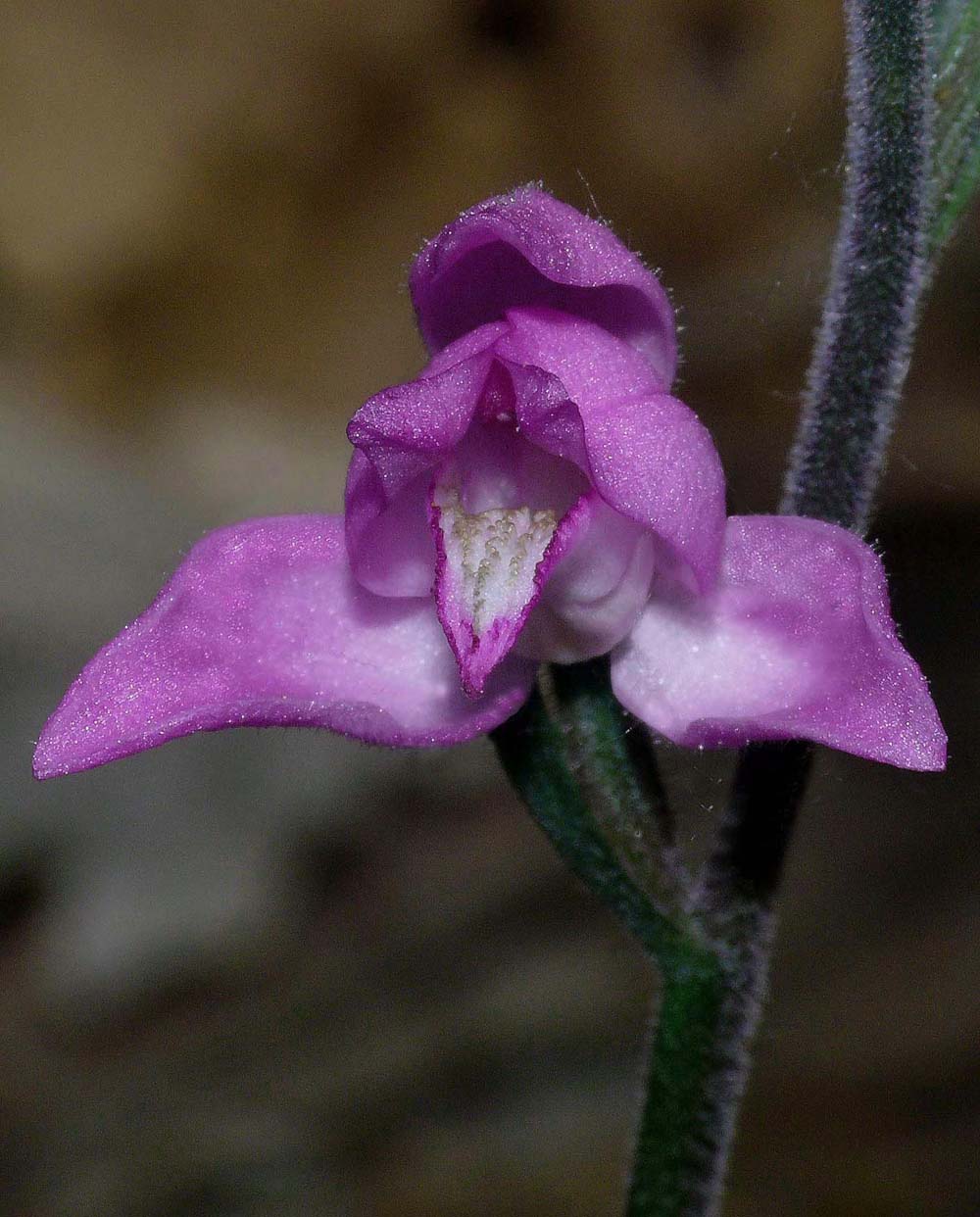
Moving south we come to the Cotswolds, an area of alkaline hills characterized by lush meadows and broad leaf woodland which is home to several species of orchid including many Epipactis species. A special resident of these woodlands is found in only two other locations in Great Britain and this is Cephalanthera rubra (pictured opposite). In its other two sites in Buckinghamshire and Hampshire it is struggling but here it is holding its own and in 2012 produced 30 spikes.
To the east of the Cotswolds are the Chilterns, of which only the northern tip come under the auspices of this guide, they do however offer similar limestone landscapes and a good range of orchid species. Finally we arrive at East Anglia, a predominantly flat landscape with barely a hill worthy of the name. This does not however detract from its importance as a region with an interesting flora, much of this interest being found in the fens and wetlands around the Norfolk Broads. The fenland landscape unsurprisingly results in a flora adapted to this type of marshy habitat, which in orchid terms translates into a
In Cambridgeshire an area of chalk grassland has hosted the second biggest colony of Himantoglossum hircinum in Great Britain. The population exceeds a thousand plants and is now considered self sustaining and not in need of any specialist management.
Some species of orchid are at their northerly distribution limit in Central England and amongst these is Epipactis purpurata which can be found at Cloud Wood Nature Reserve near Ashby-de-la-Zouche as well as at Nunnery Wood near Worcester. Epipactis leptochila is also at its northerly limit here but may be found quite commonly on the chalk escarpments of the Cotswolds where it grows in the shade of broad leaf woodland and particularly where there is deep leaf litter. Such habitat is relatively easy to find in the Painswick and Slad Valleys north of Stroud in Gloucestershire. A final species which just creeps into the central region is Herminium monorchis (Musk Orchid) which can be found sparingly on the grassy flanks of Ivinghoe Beacon near Dunstable in Bedfordshire.
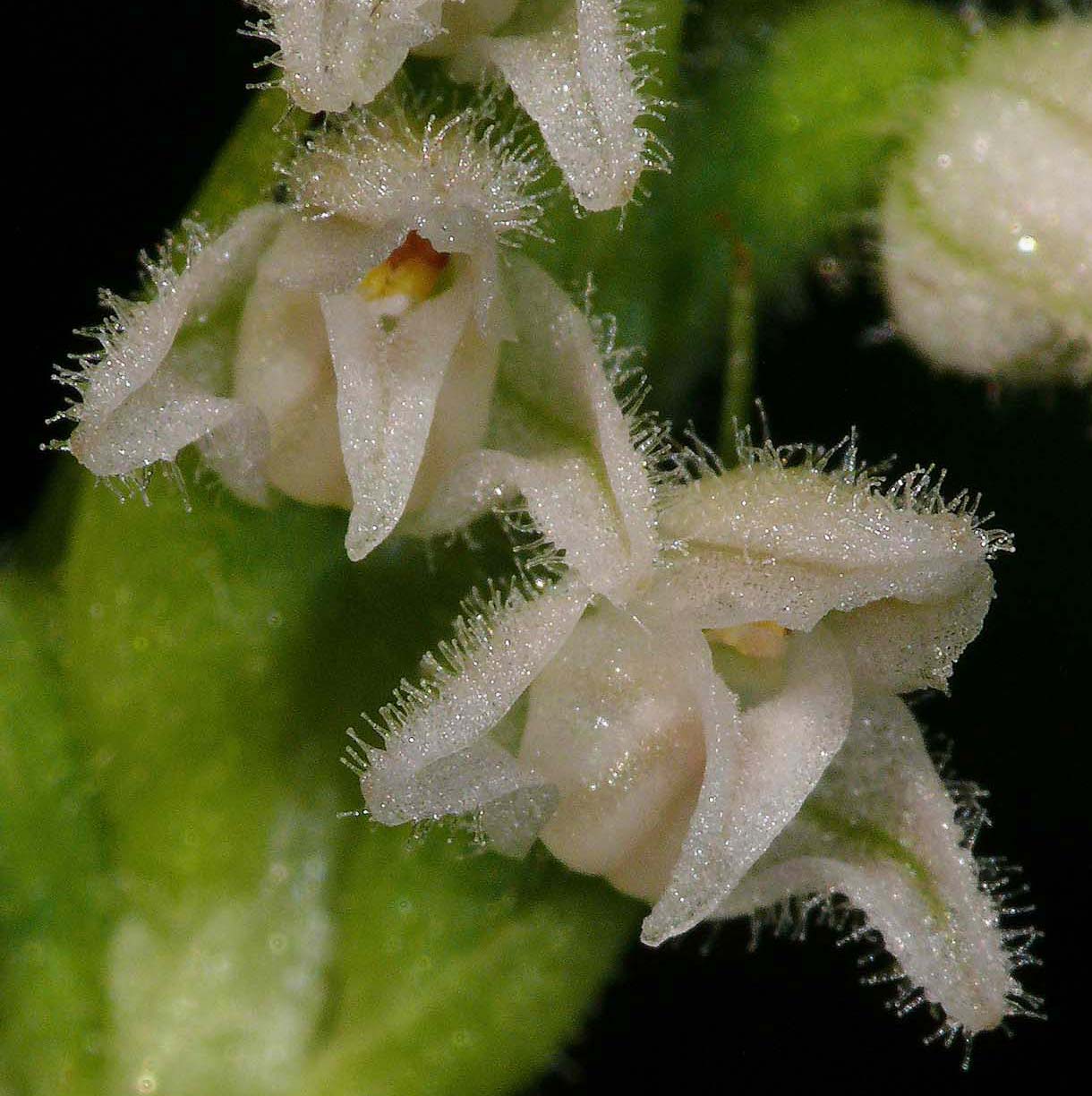
vv